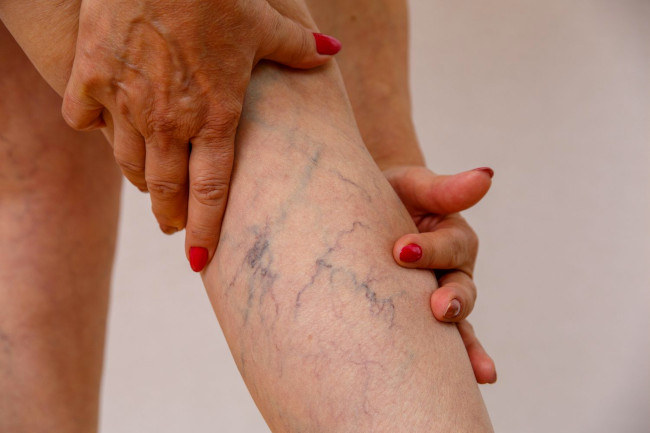Varicose veins, a common condition that affects millions worldwide, can cause discomfort and aesthetic concerns. These enlarged, swollen veins, often blue or purple, develop when valves within the veins weaken or fail, leading to blood pooling and vein dilation. While varicose veins can appear anywhere, they are most common in the legs due to increased pressure from standing and walking. Early detection and understanding of the causes, symptoms, and treatment options for varicose veins are crucial for effective management, preventing further complications, and improving the quality of life for those affected.

Understanding Varicose Veins
Varicose veins result from a condition called venous insufficiency, where the valves in the veins fail to work properly. With this condition, faulty veins and valves prevent backward flow, causing blood to pool and exert pressure on the vein walls instead of flowing back up to the heart. This increased pressure leads to the visible bulging and twisting characteristic of varicose veins. Several factors contribute to the development of varicose veins, including:
- Heredity: Genetics plays a significant role in determining susceptibility to venous insufficiency and varicose veins, with a family history of the condition increasing the likelihood of its occurrence.
- Age: As individuals age, the natural wear on vein valves can lead to their deterioration, increasing the risk of venous insufficiency and resulting in varicose veins.
- Pregnancy: Hormonal changes and increased blood volume during pregnancy can put added pressure on veins, leading to the development of varicose veins, which often improve after childbirth.
- Obesity: Increased abdominal pressure places additional strain on the veins, contributing to the development and worsening of varicose veins.
- Occupation and Lifestyle: Jobs or activities that involve prolonged periods of standing or sitting can impede blood circulation and contribute to varicose veins.
Symptoms of Varicose Veins
Varicose veins may present with various symptoms, including:
- Visible Veins: Bulging, twisted veins visible beneath the skin, often with a blue or purple color.
- Pain and Discomfort: Aching, throbbing, or heaviness in the legs, especially after prolonged standing or sitting.
- Swelling: Swelling, particularly around the ankles and lower legs, due to secondary effects on the lymphatic system.
- Skin Changes: Skin discoloration, itching, or dryness near the affected veins.
- Complications: In severe cases, varicose veins may lead to complications such as skin ulcers, bleeding, or superficial thrombophlebitis.
Treatment Options by Vein Specialists
Vein specialists offer a range of treatment options to address varicose veins and alleviate symptoms. Treatment recommendations are based on the severity of the condition, symptoms, and individual patient factors. A vein specialist will examine the affected area to see if there is any swelling or other indicators of varicose veins. A doctor can also use a venous Doppler ultrasound, a painless test that uses sound waves to determine how blood flows through the veins and valves of the affected area. Common treatment options include:
- Sclerotherapy: This minimally invasive procedure involves injecting a solution directly into the affected veins, causing them to collapse and eventually fade from view. Sclerotherapy is effective for treating smaller varicose veins and spider veins. Some veins may need repeated injections, depending on the size.
- Endovenous Laser Ablation (EVLA): EVLA is a minimally invasive procedure that uses laser energy to heat and seal off the affected vein. By closing the faulty vein, blood is rerouted to healthier veins, reducing pressure and improving circulation. EVLA is particularly effective for treating larger varicose veins.
- Radiofrequency Ablation (RFA): Like EVLA, RFA uses radiofrequency energy to heat and seal the affected vein. This minimally invasive procedure offers excellent results with minimal discomfort and downtime.
- Ambulatory Phlebectomy: In cases where varicose veins are close to the skin’s surface, ambulatory phlebectomy may be recommended. During this procedure, the vein specialist makes small incisions near the varicose veins and removes them using a special hook-like instrument. Only the area around the vein needs to be numbed for the procedure and typically leaves minimal scarring.
- Compression Therapy: Compression stockings may be prescribed to improve circulation and alleviate symptoms associated with varicose veins. Wearing compression stockings all day is typically the first method that is used. These garments exert pressure on the legs, helping to prevent blood from pooling and reducing swelling and discomfort. Medical supply stores have a selection of compression stockings that vary by the pressure they put on the affected area.
- Lifestyle Modifications: Vein specialists may recommend lifestyle changes, such as regular exercise, maintaining a healthy weight, elevating the legs, and avoiding prolonged periods of sitting or standing, to alleviate symptoms and prevent the progression of varicose veins.
Conclusion
Varicose veins can be a source of discomfort and self-consciousness for many individuals, but effective treatment options are available through vein specialists like Utah Vein Specialists. By understanding the causes, symptoms, and available treatments for varicose veins, individuals can take proactive steps to manage this condition and improve their quality of life. Using minimally invasive applications like sclerotherapy, endovenous ablation, lifestyle modifications, and compression therapy, vein specialists offer comprehensive care tailored to each patient’s needs, helping them achieve a healthier, more comfortable life. If you’re experiencing symptoms of varicose veins, consulting with a vein specialist can provide personalized recommendations and effective solutions to address your concerns.








